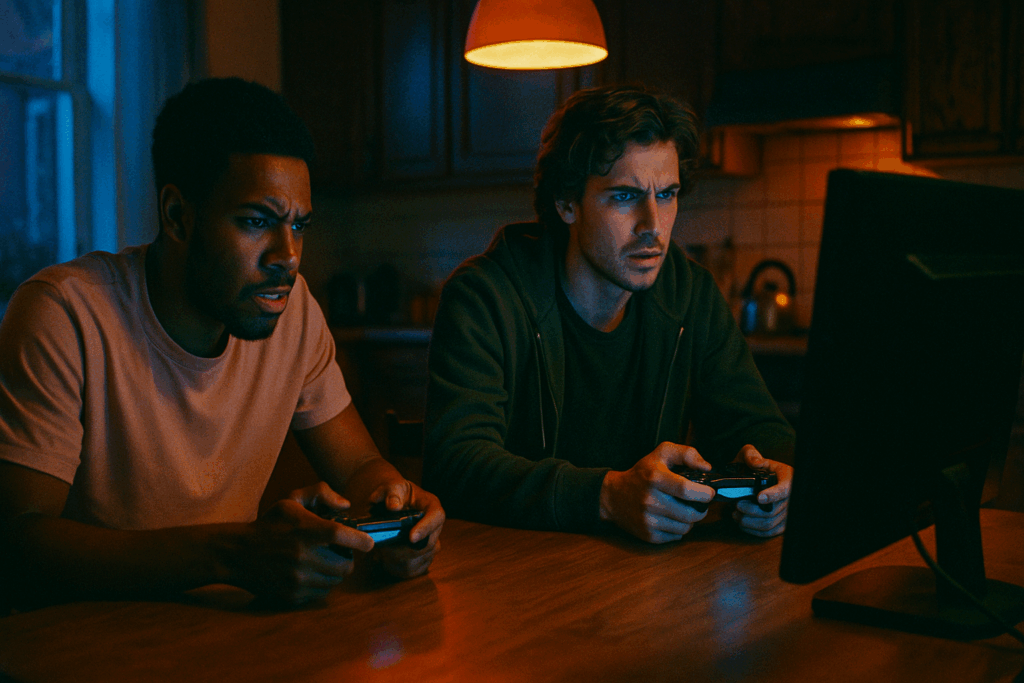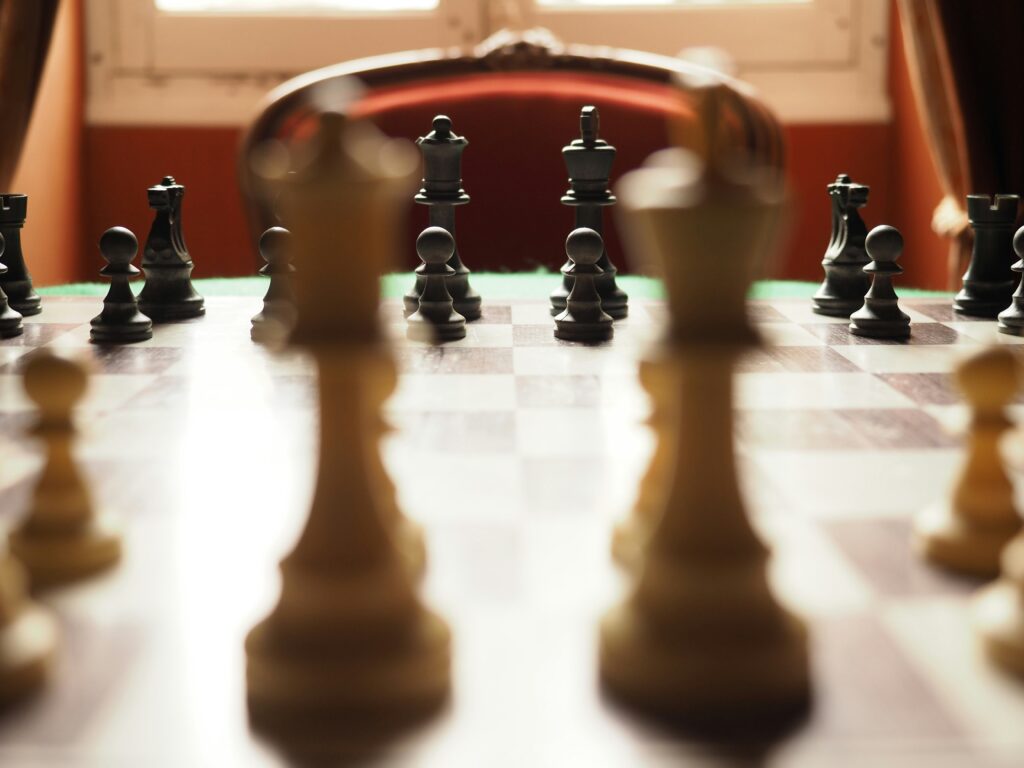Why Adaptation is the Real Winning Strategy
Skill will get you on the board. Adaptation keeps you there. The real split between casual players and competitive standouts doesn’t come down to reaction speed or flashy kills—it’s who can read the room and adjust mid-match. Casuals stick to what worked last game. Competitors figure out what’s working right now.
A common misconception? That a single strategy is enough if you just execute it perfectly. Reality check: no battlefield stays static. Patches drop, metas shift, opponents learn. Locking into one approach is the fastest way to flatline your progress. Tactics are disposable. Awareness isn’t.
It starts in the mind. You don’t need the flashiest gear or the most exotic loadout—you need to stay flexible. Keep what works, toss what doesn’t, and rebuild fast. That’s not weakness; that’s how you win under pressure. Pro-level success is more about adapting your decisions than styling your highlights.
Reading the Meta: Know the Terrain
Ask any top-tier player what separates wins from losses, and most won’t say reflexes—they’ll say timing. That starts with understanding how the game environment itself shifts. Patches, weapon balancing, ability nerfs, cooldown tweaks—these aren’t minor background noise. They’re the new playbook. One update can turn yesterday’s OP loadout into today’s handicap.
Tracking changes isn’t optional anymore. Pros don’t just wait for patch notes—they dissect them. They run scrims, join Discord theorycrafts, follow dev commentary, and compare performance data pre- and post-update. It’s part intuition, part field work.
And while it’s tempting to always try and out-invent the meta, sometimes the smartest move is to lean into what’s working for the masses. There’s logic in the crowd—popular picks often become meta not because they’re trendy, but because they’re tested and proven. If 80% of high-rank players just switched to a new strat after a patch, it’s probably worth asking why.
Want a foundation to build your tactical awareness? Start with the basics: Beginner’s Guide to Mastering Game Tactics.
Real-Time Decision-Making: Don’t Just React—Anticipate
Top-tier players don’t just play the game—they read it. In live scenarios, the best competitors are scanning for habits, rhythms, and tendencies within the first minute of play. They’re not watching just what you do, but how often. Do you rotate after every two kills? Do you peek corners the same way every time? That pattern becomes their window.
This awareness births rapid-response planning. It’s not about reacting faster than everyone else—it’s about predicting what’ll happen next. If you’ve seen your opponent dive into mid twice during pressure plays, you start prepping for it the third time—positioned, crosshair ready, bait laid. It feels fast, but it’s deliberate. That’s the difference.
And when things go sideways—because they do—the elite walk away with mental notes. A lost duel or a failed read isn’t just a failure; it’s data. What did the other player know that I didn’t? What did I miss in that flash of movement? They’re reviewing, tweaking, and refining on the fly. That split-second L becomes a future win.
It’s a cycle: spot the pattern, act with intent, learn regardless of the outcome. That’s how you stop reacting and start dictating the match.
Customizing Your Loadout & Role on the Fly
In competitive play, sticking to one character or weapon because it’s your favorite isn’t just limiting—it’s dangerous. Smart players know when to switch. If your team can’t push past chokepoints or lacks crowd control, it’s time to drop your usual pick for something that fits the need. Your job isn’t to shine solo; it’s to fill gaps that make the team work.
That means reading situations fast. Are your opponents running a heavy zone-control strategy? Switch to long-range pokes or area denial tools. Is your healer overwhelmed? Time to swap to support or shift tactics to help them breathe.
Playstyles matter, too. Aggressive flanking won’t work if your squad plays slow and methodical. Force-fitting a playstyle only breaks team rhythm. Instead, shift your tempo—adjust how you deal damage, provide cover, or pressure the enemy—so your crew clicks.
Flexible builds unlock solutions. Think toolkits, not trophies. Build your loadouts around utility, not vanity. A mid-tier weapon in the hands of someone who knows when and why it’s best beats a flashy loadout any day.
Bottom line: adapt your gear to the moment, your role to the team, and your ego to the objective. That’s how you keep winning when the heat starts rising.
Studying Your Mistakes Like a Pro
Most players hit “next match” before that final scoreboard even fades. Big mistake. Post-game analysis might be the most overlooked weapon in a competitor’s arsenal. If you’re not reviewing what just happened—what went wrong, what worked, where you slipped—you’re wasting perfect intel.
Start with replays. Watch without ego. Look at your positioning, awareness, and timing. Were you chasing kills or playing the objective? Did you predict the rotation—or get baited? Stats and heatmaps help too. Track where you died most, where your aim dropped, or how long you held a zone. The data is usually honest, even if it’s not flattering.
Focus especially on patterns. Do you always overextend after a good play? Do you freeze in 1v2s? Is your early game solid but your closeouts shaky? Drill down on those gaps. You’ll learn faster by targeting weaknesses directly, not randomly grinding more hours. Smart volume beats blind repetition.
Everyone praises highlight reels. Few put in the quiet work of self-review. That’s where the edge is.
Staying Mentally Agile in High-Stress Matches
High-stress matchups don’t just test mechanics—they test mental fortitude. Whether it’s a ranked game on the line or facing a full-stack on comms, pressure can cloud decision-making. True competitive growth starts with mental agility.
Recognize and Manage Tilt
Tilt happens to every player, but knowing how to handle it separates serious competitors from those stuck in a loss spiral.
- Notice early signs of frustration (e.g., rushing plays, blaming teammates)
- Use short breaks between rounds to reset focus
- Develop personal reset rituals, like deep breathing or standing up briefly
If you’re tilting mid-game, don’t try harder—try smarter. Shift your role, slow down, and regain control of your tempo.
Fighting Fatigue with Focus
In long match sessions or tournament environments, mental fatigue is inevitable. Staying sharp under fire requires more than caffeine and adrenaline.
- Track your energy levels—fatigue means slower reflexes and poorer decisions
- Train clarity over chaos: use simple comms and stick to core tactics
- Establish cooldown periods between intense matches to reset mentally
Build Simple Focus Routines
The most effective players prepare their minds as well as their mechanics. Create habits that keep you locked in.
- Pre-match warmups: aim training, movement drills, or even 5 minutes of calm visualization
- In-game checkpoints: pause to reassess every few minutes (e.g., “Have the enemy changed strategy?”)
- Post-match wind-down: journal key moments or talk through the game with teammates
Mental agility isn’t about being unshakable—it’s about resetting quickly and adapting faster than your opponent. In high-stakes moments, the calmest player often wins.
Consistency Over Cockiness
The best players aren’t chasing highlight reels—they’re crafting systems. They show up with the same routines, same prep, same standards, whether it’s a ranked match or high-stakes tourney. That kind of repetition doesn’t just reduce mistakes—it builds a level of muscle memory most players never touch.
It starts before the game even loads. Serious players warm up with a purpose. Crosshair training, movement drills, mental focus—whatever gets them dialed in. After the match, it’s the same quiet discipline: cooldowns, reviews, notes. Nothing glamorous, but it works. They treat their play like a craft, not a lottery.
And yes, a lot of it is boring. Same strats. Same rotations. Same setups. But that’s the point. Predictable execution crushes wild improvisation nine times out of ten. Consistency may not trend on YouTube, but it stacks wins.
The players who go far are the ones who can perform at 90% on an off day—because they’ve taken the time to make 90% automatic.
Final Takeaways
Adaptation won’t get you highlight reels. It won’t go viral. But it’ll keep you in the game when everyone else burns out or clings to a strategy that stopped working three patches ago. The standout players aren’t always the flashiest—they’re the ones who experiment, fail fast, and update their play under pressure.
Staying curious means never assuming you’ve figured it all out. Every match, every meta shift, every update is handing you new data. Most players ignore it. You shouldn’t. Test builds. Tweak routines. Push beyond your comfort zone. If something feels too easy, it’s probably making you stale.
Games change. Tactics change. You either evolve, or you get stuck rewatching old wins that don’t matter now. Stay uncomfortable. That’s where real growth happens. The winners aren’t just reacting—they’re the first to adapt.




